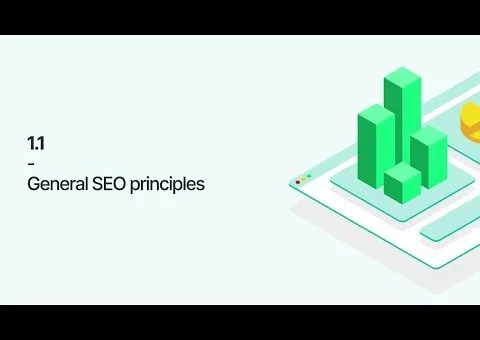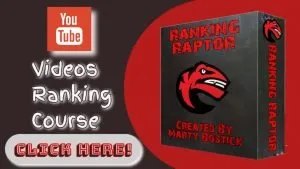
Welcome back to our course about website analytics and SEO!
Let’s start off by understanding a few things about traffic. There are several channels that can get you traffic for your website, like social media, paid online ads, streaming platforms, organic searches, etc, etc. Each of these with their own possibilities. SEO is the one possibility that is likely to get you the most benefits long-term. And this is why we focus on this on our course.
So what is SEO? SEO stands for Search Engine Optimization and it basically means getting your website ready to be crawled and understood by search engines so that it ranks higher in searches. Because you want to be seen at the top when people do search queries related to what you have to offer. Depending on the type of search, at least 60% of clicks go to the first three results on a page. About 90% of all clicks stay on the first page of the search engine result page. So you want to be on that first page and if possible in the top three. Have a look at the graph.
It shows the click-through rate distribution among search results. Obviously, the most clicks on the left of the graph go to the first result on Google. It’s between 30 and 45 percent of all clicks and then, as we move down the list of results, the number of people clicking on lower results drastically decreases. The blue line that you see there is a representative of the branded searches, which means that the brand name is in the query. The red line means non-branded searching. Naturally, when you do a branded search, you are more likely to click on the first result because you already know what you’re looking for and you know the brand. When you’re doing a non-branded search, the curve is not as steep and there may be an extra chance that think to get a click even if you are not in the first position or, maybe, the first top three.
Anyway, the idea is that the odds of your content being seen by people searching on Google are close to zero if you don’t rank high enough. So how long does it take to actually do SEO that brings you there? This is not easy. SEO is a lengthy process that involves sustained work, both on the website and off it. Getting into relevant positions in the search result pages takes time and the newer your website and domain are, the more difficult it will be to get significant organic traffic from search engines. SEO is in many ways like a long-term relationship. You need to constantly work on it, you know, like at the first stages of a relationship you keep on bringing presents and flowers to the one you love. It’s the same with SEO, especially in the beginning you need to work on it a bit more.
But once you start seeing success, things will become more stable and reliable, but there are many things to say about this here. But one rule is that content is king. If your content is great and people find it valuable, read it, share it, etc, you won’t need to worry too much about actively doing SEO in a way we can talk about unintentional SEO. And I’ve seen cases of websites not following all SEO standards, but still ranking high because of their popularity. When you first create a website, don’t assume search engines will automatically be aware of it. Remember how many websites we said there were online? More than 1.7 billion. It’s hard for Google or any other search engine to keep track of every one of those, but you can give search engines a heads up letting them know you exist. For this, you need a Google search console account. And this is what it looks like. It’s vital to create one. Not only can you use it to invite Google to check your pages, you can insert the URL here and just ask Google to inspect the URL. You can also see Important data about the total number of clicks you get from search engines, the total number of Impressions, the average CTR, average position and much more. Later in the course, we will show you exactly how to set it up and use it. You can also use rank tracking tools to monitor rankings. This is one such example from Semrush.
Here, we need to input the keywords you want to track and then the tool automatically checks every day how your website ranks for these keywords. Remember there are other search engines besides Google, which is the biggest one, of course. Bing or DuckDuckGo can also bring traffic for you. In fact, DuckDuckGo is rising in popularity right now, as it is a search engine used by those who are concerned with their online privacy, which is a big issue nowadays. Anyway, for the most part, if you do SEO for Google, you are covered for the others too. Yet, don’t forget to submit your site to Bing Webmaster Tools. DuckDuckGo also takes their data from Bing, so you are covered for both if you do that. The Bing Webmaster Tools is an equivalent to the Google Search Console and it also allows you to import data from the Google Search Console into it, like you see here.






